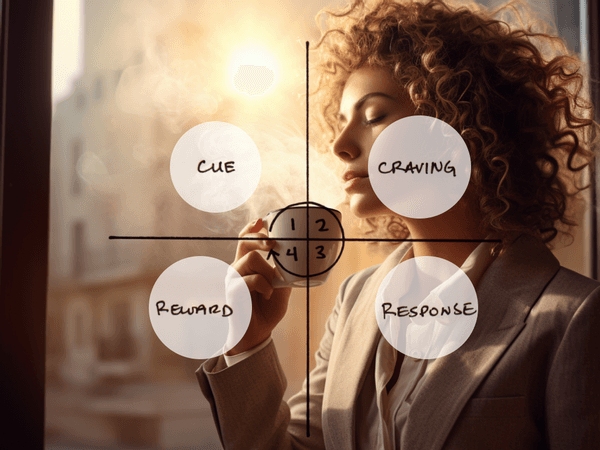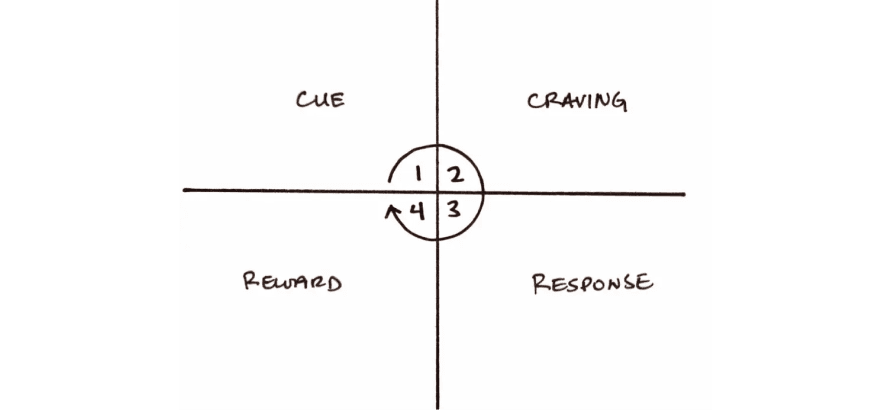The Habit Loop: 5 Habit Triggers That Make New Behaviors Stick
Curated from: jamesclear.com
Ideas, facts & insights covering these topics:
2 ideas
·43.9K reads
232
Explore the World's Best Ideas
Join today and uncover 100+ curated journeys from 50+ topics. Unlock access to our mobile app with extensive features.
The Habit Loop
Each habit can be deconstructed in these 4 steps:
- The cue (smell of coffee) triggers a craving (I want coffee)
- which motivates a response (Buy coffee)
- which provides a reward (I feel good and energetic)
- which satisfies the craving and, ultimately, becomes associated with the cue.
Together, these four steps form a neurological feedback loop—cue, craving, response, reward; cue, craving, response, reward—that ultimately allows you to create automatic habits.
5.46K
24.8K reads
5 primary ways that a new habit can be triggered
- Cue 1: Time - Most common way to trigger a new habit
- Cue 2: Location - Most powerful driver of mindless habits and also the least recognized
- Cue 3: Preceding Event - Many habits are a response to something else that happens in your life
- Cue 4: Emotional State - emotional state is a common cue for bad habits
- Cue 5: Other People - people you surround yourself with can play a role in your habits and behaviors.
5.73K
19K reads
IDEAS CURATED BY
Evie Gold's ideas are part of this journey:
Learn more about personaldevelopment with this collection
How to challenge assumptions
How to generate new ideas
How to break out of traditional thinking patterns
Related collections
Similar ideas
2 ideas
The Power of Habit
Charles Duhigg
3 ideas
The Power of Habit
Charles Duhigg
4 ideas
The Ultimate Habit Tracker Guide
jamesclear.com
Read & Learn
20x Faster
without
deepstash
with
deepstash
with
deepstash
Personalized microlearning
—
100+ Learning Journeys
—
Access to 200,000+ ideas
—
Access to the mobile app
—
Unlimited idea saving
—
—
Unlimited history
—
—
Unlimited listening to ideas
—
—
Downloading & offline access
—
—
Supercharge your mind with one idea per day
Enter your email and spend 1 minute every day to learn something new.
I agree to receive email updates

